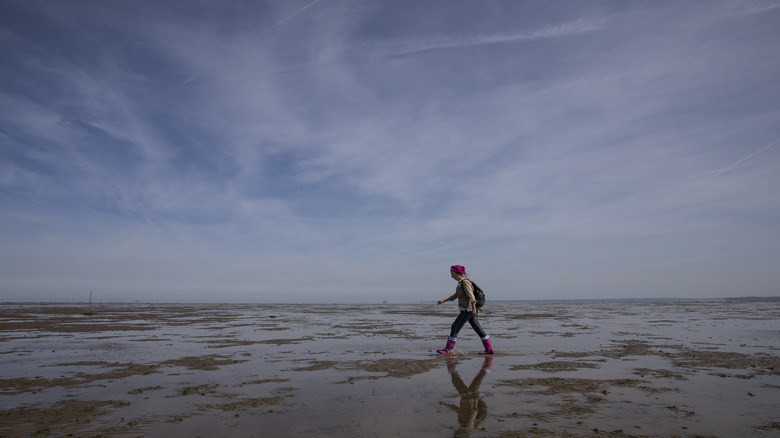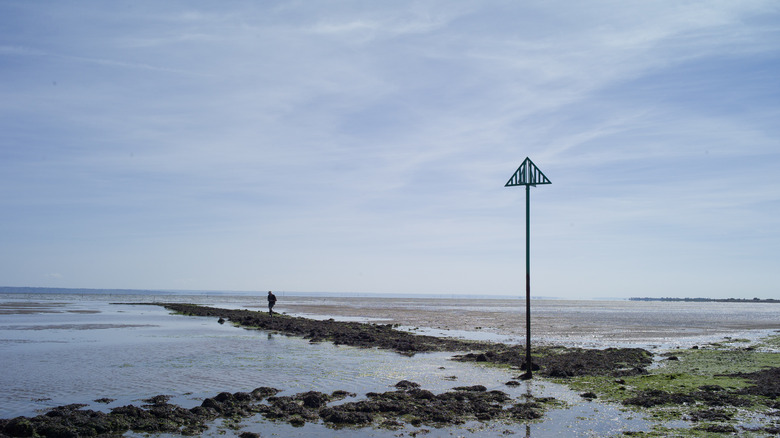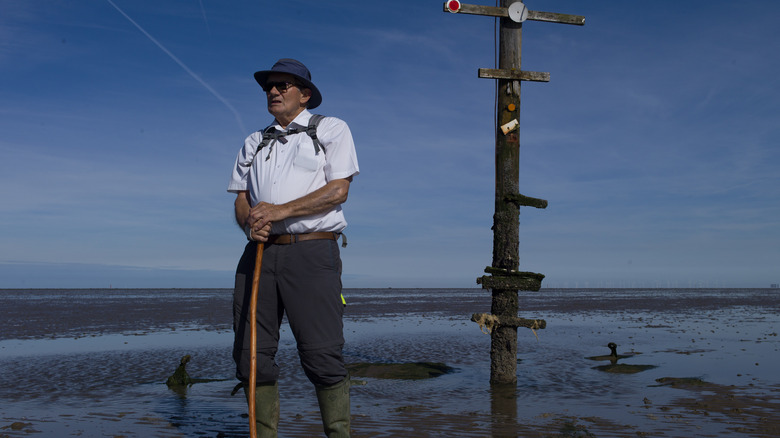Thrill Seekers Will Love The Challenge Of Hiking The Deadliest Trail In The UK
Foulness Island lies just off the coast of Essex in England, separated from the mainland by a series of creeks stemming from the River Roach. Although around 200 people live there, it is not a very easy place to visit. The Ministry of Defense (MOD) bought the island during the First World War and it is still used for live artillery testing, run by a defense tech company called QinetiQ on behalf of the government. That means access to the island is largely restricted other than public footpaths, which are only accessible when the firing range is not in use.
It was even harder to casually visit Foulness in the past. No roads connected the island to the rest of Essex before 1932, and the only access was from an ancient footpath that crossed the broad mudflats of Maplin Sands when the tide was out. In the old days, bundles of brooms were used as markers, giving the path its name: The Broomway. Nowadays, the brooms are gone and Foulness is accessible over Havengore Bridge, the only way for vehicles to get onto the island. But the Broomway is still there (at certain times of day, at least), a public right of way that is a magnet for intrepid walkers who like to live a little dangerously and don't mind getting their feet wet. It is a stroll that requires extreme caution, however, as the Broomway has become notorious as Britain's most dangerous footpath.
Why is The Broomway so dangerous?
If you zoom into a map of the Broomway on Google Maps, it looks like an error at first: A solid line indicating a footpath out at sea, running parallel with Foulness Island. But it is no mistake. At low tide, The Broomway strikes out from the coast at Wakering Stairs, traverses an almost featureless mudscape around 400 meters from the shore, and rejoins dry land on the restricted island.
This watery path dates at least as far back as 1419, and over 100 recorded deaths have occurred on the Broomway over the centuries. Of those who perished, only 66 were recovered for burial and the rest were lost to the waves. The danger is apparent when you reach Wakering Stairs, a crumbling causeway that vanishes into the sea at high tide. At these times, the Broomway is completely underwater, and marker poles offer the only clues to its existence.
The treacherous path is revealed when the sea recedes more than two miles, although "path" is a pretty strong word. It is wiped clean with every tide and only marker poles indicate where the sand bar is safe enough to walk. Deep mud and quicksand await anyone foolhardy enough to leave the route, and the returning tide is a major hazard. It comes back in faster than a person can run, and many of the path's victims have drowned in the rapidly rising waters.
Traveling on the Broomway safely
The lethal tide and invisible traps aren't the only dangers on this perilous route. Although Foulness Island is generally off-limits, the Broomway and several Public Rights of Way are accessible to visitors, although only when the artillery range is not in use. Warning signs and red flags indicate when live ammo may be in use, making it extremely dangerous during those times. The QinitiQ public access leaflet also advises that walkers shouldn't touch unidentified objects because they could be unexploded weaponry. The hazards are very real; in 2020, a couple required rescue by hovercraft after they entered a restricted area on Foulness Island and got stuck in mud near live ammunition.
Although it is possible to tackle the Broomway on your own, the safest and most entertaining way to experience the footpath is by taking a guided walk. Several websites offer tours with experienced local guides, and the journey takes around four hours, with some providing a stop for tea and biscuits along the way. Although the walks are available all year round, it is worth considering the weather. Whenever you visit England, conditions can be unpredictable at the best of times, and there is no shelter from the elements on the Broomway; appropriate seasonal footwear and clothing are recommended. Whichever time of year you go, a guide will make sure you return to tell your friends how you survived Britain's most unusual and deadly footpath.


